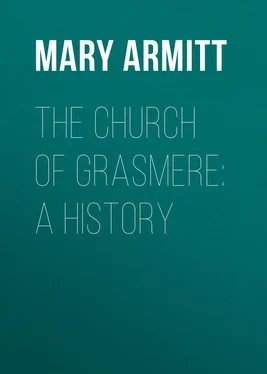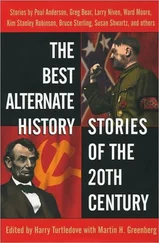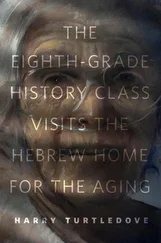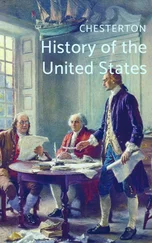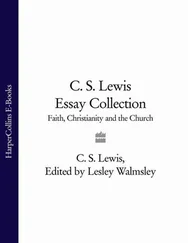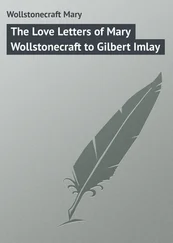Mary Armitt - The Church of Grasmere - A History
Здесь есть возможность читать онлайн «Mary Armitt - The Church of Grasmere - A History» — ознакомительный отрывок электронной книги совершенно бесплатно, а после прочтения отрывка купить полную версию. В некоторых случаях можно слушать аудио, скачать через торрент в формате fb2 и присутствует краткое содержание. ISBN: , Жанр: foreign_antique, foreign_prose, на английском языке. Описание произведения, (предисловие) а так же отзывы посетителей доступны на портале библиотеки ЛибКат.
- Название:The Church of Grasmere: A History
- Автор:
- Жанр:
- Год:неизвестен
- ISBN:http://www.gutenberg.org/ebooks/43002
- Рейтинг книги:4 / 5. Голосов: 1
-
Избранное:Добавить в избранное
- Отзывы:
-
Ваша оценка:
- 80
- 1
- 2
- 3
- 4
- 5
The Church of Grasmere: A History: краткое содержание, описание и аннотация
Предлагаем к чтению аннотацию, описание, краткое содержание или предисловие (зависит от того, что написал сам автор книги «The Church of Grasmere: A History»). Если вы не нашли необходимую информацию о книге — напишите в комментариях, мы постараемся отыскать её.
The Church of Grasmere: A History — читать онлайн ознакомительный отрывок
Ниже представлен текст книги, разбитый по страницам. Система сохранения места последней прочитанной страницы, позволяет с удобством читать онлайн бесплатно книгу «The Church of Grasmere: A History», без необходимости каждый раз заново искать на чём Вы остановились. Поставьте закладку, и сможете в любой момент перейти на страницу, на которой закончили чтение.
Интервал:
Закладка:
Once within the churchyard, the different streams of the townships mingled as fellow parishioners. The sexes however, divided, the women seeking entrance (presumably) by the great south porch, and the men (after business done) herding in by the west door, known as theirs. Yet once inside, they again fell rigorously into ranks of townships, as we shall see.
The gathering of the dalesfolk for worship must have been a striking sight, especially on the great feast days when – four times in the year – the sacraments were administered. Certainly attendance at church was obligatory upon every Sabbath Day, and fines were levied for default. But from the early seventeenth century, if not before, the dependent chapels in Langdale (at Chapel Stile) and Ambleside would absorb many of the more distant worshippers. For the four great celebrations, however, the whole of the adult population of the valleys, except the sick and infirm, would attend the parish church. 39 39 It is not easy to discover what was the early practice of the church concerning the administration of the sacrament, or the number of times it was received yearly by the laity. As early as 750, laymen who failed to communicate at Christmas, Easter, and Pentecost, were not esteemed christians; they were expected to make offerings four times a year. A later rule, which was stringent, seems to have been once a year, though a more frequent attendance – specially at Easter and Christmas, was urged. See Abbot Gasquet's Parish Life in Medieval England , Wall's Old English Parishes , p. 90, and Wordsworth's Medieval Services in England . The sacrament was called housel , and the bread houselling-bread . Henry VII's queen, Elizabeth of York, appears to have communicated three times a year, at the festivals of Easter, All Saints, and Christmas (Canon Simmon's Notes to the Lay Folks' Mass Book , p. 239). Queen Victoria no doubt clung to an old custom when she communicated no oftener than three or four times a year. (See Life .)
It is of course impossible to compute the number of the people, especially in early times; but if we accept the statement made in the Presentment of 1712, that there were then about 200 families in the parish, it may be reckoned that at that time and for at least a century previously, no fewer than from 500 to 700 communicants would gather for the rite. Besides the master and mistress of the homestead, there were grown-up sons and daughters, with farm servants. 40 40 The population must have been greater when the Kendal trade in cloth was at its height. There were 1300 "houseling people" reported for the parish of Windermere in 1549 (Commission quoted in Mr. Brydson's Sidelights on Mediæval Windermere , p. 95), and there is no reason to suppose that Grasmere was far behind. At the same time the numbers to collect at one celebration would be considerably lessened if the Easter communion were spread over several occasions, as was the case in the late seventeenth century at Clayworth, Notts, where celebrations were held on Palm Sunday, Good Friday, as well as Easter Day. All parishioners – to judge from the rector's careful record – must at this season have communicated; but at the celebrations of Whitweek and Christmas (for there was none at Michaelmas) the numbers were much lower. ( Rector's Book of Clayworth ).
The garth would be crowded with the concourse of folk; and when they trooped into the fane, each township to its own quarter of the building, where men and women again divided to take their accustomed places upon their separate forms, and the dogs sneaked in, hoping to escape the dogwhipper's eye as they settled under their masters' legs, the whole space must have been packed.
The old, narrow close-set forms seated far more people than the modern benches, but even they could not have accommodated the crowds that attended certain funerals. (See Charities.) At Mrs. Fleming's funeral, for instance, few short of 2000 persons must have been present, including dole-getters, neighbours and relatives.
SOME LEGAL ASPECTS OF THE CHURCH
Thus for worship did the folk gather in the church. They came thither also to bury their dead within consecrated soil – for baptism of their "barnes" by the priest, and the binding of man and woman in holy matrimony. But the edifice and the enclosed space about it served in early times not only for purposes of religion, but of the law. Like the Roman Forum, it was used for the transaction of public business and the administration of justice. Bargains were ratified, covenants were witnessed, and protestations made solemn by an oath taken upon the Holy Gospel where it lay upon the altar – once a wonderful script illuminated and jewelled, that is now represented by the dirty little Testament of the Law Courts. Manor Courts and legal enquiries or inquests were frequently held within it. Public notices that concerned the townships – private ones even of auctions and the like – were proclaimed before the assembled people in the garth or the porch, if not in the building itself. Punishments for moral offences were carried out in face of the congregation. 41 41 We have no evidence of this to show for Grasmere Church. But in 1622 "Sir" Richard Pearson, curate of Troutbeck, was empowered by the rector of Windermere to publicly revoke the sentence of excommunication under which one Adam Birkhead lay. An edict was issued from the registry of the Archdeaconry of Richmondshire as late as 1715, citing a form of penance to be gone through by George Birkett, who before the congregation of Troutbeck, and in "penitential habit," was to confess his grievous sin of incest with his deceased wife's sister. An additional note, however, empowered Mr. Barton, rector of Windermere, and Mr. Grisedale, curate, to use their discretion as to the manner of confession, and to allow the sinner, if properly penitent, to make it "in his Ordinary apparell" (Browne MSS.). It may have been the dislike of public penance, with its peculiar habit, that caused the churchwardens of Grasmere so often, and so incorrectly, to return a clean bill of morality in their Presentments.
The priests and the clergy acted as legal agents for the unlettered folk till comparatively recent times. They were versed in the intricacies of law, as well as ritual, and skilled in penmanship and the Latin tongue. The higher of them are found acting as agents and accountants for the holders of the fees into which the barony became split, as documents which concern our parish show.
Frequently the chaplain or the village priest drew up indentures, petitions, and secular agreements for the living, as well as the testaments of the dying. Wills were proved at the church registry of the diocese, and were stored there. The wills of the parish of Grasmere went to the town of Richmond, the centre of the archdeaconry; and not until 1719 were they proved at the secular courts of Kendal and Lancaster. 42 42 Wills and Inventories of the Archdeaconry of Richmondshire (Rev. J. Raine). The privilege of probate was withdrawn finally from ecclesiastical courts by Act of 1857 (Dr. Cox's History of Parish Registers ).
Instances of the use of the church fabric for secular purposes in the neighbourhood may be quoted. A Court Roll of 1443 is headed "Court of Wynandremere held at the church of Wynandremere 9 July 21 Henry VI." 43 43 Public Record Office Court Roll 207/122.
An award concerning a private dispute in 1534 between George Browne of Troutbeck and Myles Dickson of Applethwaite decrees that the former pay to the latter "upon the secunde sonday in lente next comynge O-XLs of able ynglyshe money upon or. layde Alter in Wyndandermer church betwixe VIII of the clock and XII of the said sonday." 44 44 Browne MSS.
Again, an indenture made 1571 between Mr. John Benson and his Baisbrowne tenants stipulates that the payment of certain moneys should be made "in langdaill chappell betweene thoures of eyght of the clock at aftr. noine" on the 1st of August in the two ensuing years. 45 45 Rydal Hall MSS.
In 1601, when Widow Agnes Fleming of Rydal Hall with her sons sued a Penrith man for debt, the commissioners sat and examined witnesses in Ambleside Chapel. 46 46 Rydal Hall MSS.
And within this building were probably taken down depositions in several other cases.
Интервал:
Закладка:
Похожие книги на «The Church of Grasmere: A History»
Представляем Вашему вниманию похожие книги на «The Church of Grasmere: A History» списком для выбора. Мы отобрали схожую по названию и смыслу литературу в надежде предоставить читателям больше вариантов отыскать новые, интересные, ещё непрочитанные произведения.
Обсуждение, отзывы о книге «The Church of Grasmere: A History» и просто собственные мнения читателей. Оставьте ваши комментарии, напишите, что Вы думаете о произведении, его смысле или главных героях. Укажите что конкретно понравилось, а что нет, и почему Вы так считаете.
